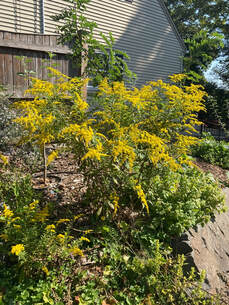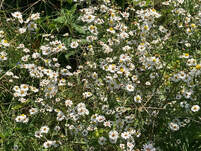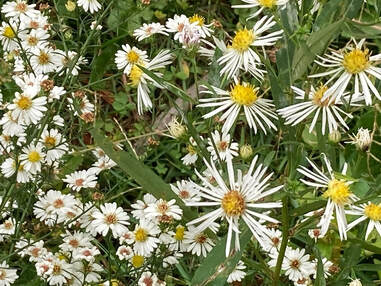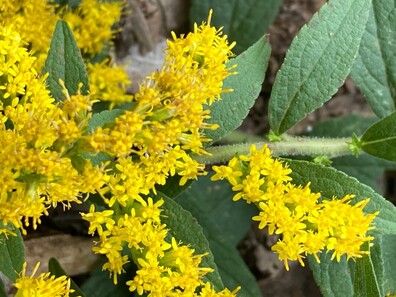|
By Eliza Asters and Goldenrod are incredible flowers. Their benefits are myriad and the best part is you probably have them growing wild in your yard. They're very easy to care for, here's how: ignore them. They key to having them in the fall is identifying them in the spring. Click "Read More" to the right below to read more.  I took a day off last week and spent it with the asters and goldenrod. I really was sick, but I was still able to go outside, so I visited the goldenrod in the sunniest spot of our yard multiple times throughout the day. It has been absolutely swarming with bugs, and different times of day bring different insect visitors.  I think you probably need some flowers that make you take a day off when they bloom. I'm going to show you a slideshow of pictures that should clearly explain why you need them and then I am going to tell you in words. Well hopefully that convinced you, but if it didn't, here are words:
 To embellish on that last note, the key to having asters and goldenrod in the fall is identifying them in the spring. Above are some photos of new spring growth, to be added to next spring. If you have anything that looks like these, let them grow! They are more likely to appear in the wilder parts of your yard, but a diversity of asters have grown up in our grass (see photo) and even in cracks in the walkway. If you have things that look like young asters/goldenrod but you're not certain that's what they are, (admittedly, lots of plants look like them) just let them grow. Over the course of the season, they'll exhibit more traits, and I've identified plants by googling descriptions of what they look like. Maybe you will get asters and goldenrod in the fall, or maybe you'll get something else. The only things you really need to worry about are invasives, and if your mystery plant turns out to be one of those, dispose of it properly.  One final note about asters and goldenrod: woodchucks help you maintain them. Before something happened to him, the woodchuck who visited our yard liked to nibble on the asters. Asters and goldenrod have apical dominance, which means the buds below the top will grow if the top is damaged. These nibbled asters bloom later, extending the pollen availability for insects. It's almost like nature works together in a perfect system and you shouldn't harm or remove woodchucks. Ahem. Also, if you accidentally weed whack your asters or goldenrod before June, they’ll just bloom later. You can also grow them in pots if you don't have a garden. I really hope this inspires you to treat yourself to some of the most magnificent flowers the Northeast has to offer. You deserve them.
0 Comments
Leave a Reply. |
Categories
All
Archives
August 2021
|
Proudly powered by Weebly




 RSS Feed
RSS Feed